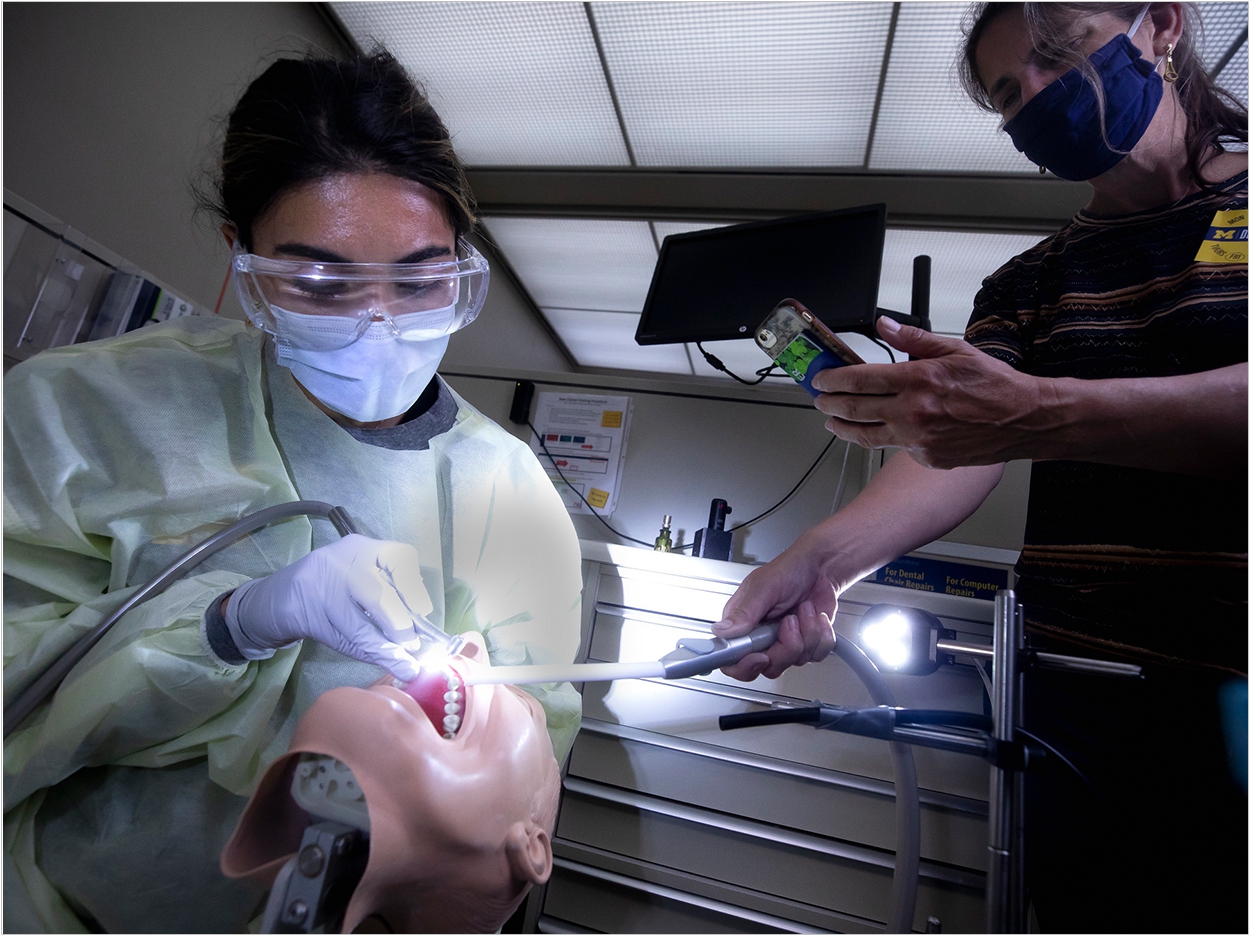
The close proximities and confined spaces of the dental office environment in a pandemic pose potential health risks that may be more problematic in dental schools and other large dental offices with similar cubicle setups, according to the University of Michigan.
To mitigate these risks, engineers at the university have analyzed the transport of aerosols within the clinics at the School of Dentistry, where up to 40 patients can be treated at the same time.
Sensing equipment often used to analyze auto emissions helped the engineering researchers understand areas of concern including the 5-foot-high walls separating each dental cubicle space and the aerosol droplets created during procedures that use water jets such as high-speed drilling and ultrasonic cleaning.
“Historic research has looked at very traditional dental settings like singular practices, singular closable rooms, but the dental school is not like that,” said Romesh Nalliah, BDS, associate dean for patient services at the School of Dentistry. “We have low barriers between cubicles so that instructors can peek over the top to speak to students.”
Nalliah reached out to the University of Michigan College of Engineering for help, and Margaret Wooldridge, PhD, MS, and Andre Boehman, PhD, MS, both professors of mechanical engineering, answered the call.
Using high-speed imaging, particle spectrometers, scanning mobility particle sizing systems, and optical particle counters, the engineers could see how the droplets were being created, how many were created, and what happened to them during drilling procedures on mannequins
“The results were fascinating. We saw things that were intuitive, like when the drill spins along the surface of a tooth, the droplets are propelled in the same direction. But we also saw huge clouds of droplets that were generated as well,” said Wooldridge.
“From the sprayed water used to cool the drill and the tooth, droplets would break apart into even smaller droplets. Some droplets bounce off the tooth like billiard balls or a soccer ball. And the droplets hand around, recirculate, and form little clouds right by the mouth of the test mannequins used,” Wooldridge said.
Further testing on aerosol suction devices designed to capture those aerosol particles around the patients’ mouths showed them to have limited effectiveness. The sheer number of variables involved in the treatment setting proved to be a hindrance.
The researchers showed how droplets could move from one cubicle to the next. Further testing showed that plexiglass barriers, extended above the clinic’s current partitions, could stop the flow of particles between cubicles.
With this data in hand, the School of Dentistry then worked with Michigan Medicine to analyze airflow throughout the clinic. The use of the extended plexiglass, while preventing cubicle to cubicle particle flow, also trapped particles in the same area, creating potential exposure for the next patient treated in the cubicle.
Plexiglass barriers were then added to some, but not all, of the treatment areas to maintain god airflow. Waiting periods also were added, and stations were cleaned and sanitized between patients. The clinic now can handle about half of its typical patient capacity under safer conditions, the school said.
“The capacity that we have now is still limited, but much better than what we were first facing,” Nalliah said. “It’s an ongoing, ever-changing, dynamic situation.”
Facilities and businesses around the world that provide in-person services have had to assess the dangers posed by bringing customers and patients inside their operations, the school said. As the university has worked to find ways to safely provide necessary services, the school added, Wooldridge’s and Boehman’s expertise has routinely been called upon, and the school has bolstered their capabilities with the addition of new equipment.
“The aerosol instrumentation that the College of Engineering helped us acquire for COVID-19 related work has been extremely useful in a variety of situations and scenarios,” said Boehman, director of the WE Lay Automotive Laboratory.
“Both our optical particle sizer and engine exhaust particle sizer have traveled to U-M’s Med School and the clinics at the School of Dentistry. These two instruments have been very useful and accumulated many miles on the road traveling to various labs,” he said.
Related Articles
The University of Michigan Charts a Virtual Course in Pandemic-Era Instruction
CDC Releases COVID-19 Guidelines for School Sealant Programs
CDC Infection Control Guidelines Catch Up With Need to Address Aerosols












